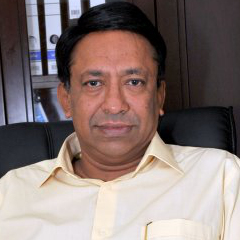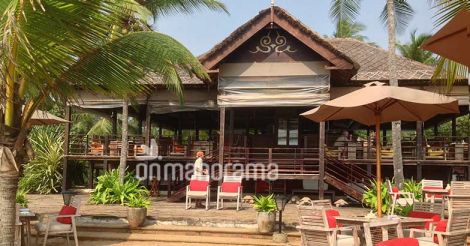Those were the days long, long ago when the Gulf was not yet golden and Keralites came in droves to Mumbai in search of jobs. And those were also the days when these youth found it difficult to find places serving their beloved ethnic food.
Pradeep KG Nair, former journalist and educationist now working in Satara, said that while living in Santa Cruz during his school days, he had never heard about the existence of a Kerala restaurant.
“So I could have Kerala food only at home,” he added.
In the late 1970s, a few Kerala eateries existed in residential buildings in the warren of lanes around the Handloom House on DN Road in the Fort-Flora Fountain area. In Kerala parlance, they were called ‘mess.’ Establishments that operated without a licence, the most popular ‘mess’ was ‘Mammukas.’Only lunch and dinner were served in these eateries. The prices were affordable. In the same area was the popular Pannur ‘restaurant’, another unlicensed eatery. Dhan, a real restaurant, also cannot be forgotten. The Dongri area, with a number of lodging houses for people making stopovers in Mumbai on the way to the Gulf, had many unlicensed eateries and also a few legitimate Kerala restaurants.
After coming to the city in the late 1970s, Jacob Kurian, from Calicut, has frequented most of the eateries around the Handloom House. “The food they served was great. The Malabari parathas and beef curry were the highlights,” he recalled. “The rice and fish fry or curry was equally delicious.
The customers were mainly the thousands of youth living and working in the surrounding areas. Mostly from the Malabar region of Kerala, they sold smuggled goods. They also purchased and sold dollars. Unemployed youth in search of jobs also frequented them.
Even in Nariman Point, where buildings like Chandramukhi were under construction in the late 1970s, there was an informal eatery in a shed. Having wooden planks for walls, it had an asbestos roof. Coarse wooden benches and tables served as furniture. Forget the décor but the fact was the food was great. The customers were Keralite construction labourers. Many white-collared Keralites, working in the high-rise buildings nearby, also frequented them for a taste of Kerala.
All the Handloom House eateries and the Pannur ‘restaurant’ in the Fort area have vanished now. Dhan restaurant is today the Stree Dhan Tea Stall. The main reason: with the smuggling and sale of foreign goods becoming a thing of the past, their sellers went to graze in new pastures. Bangalore’s replacement of Mumbai as the magnet attracting Malayalee jobseekers also contributed to the end of the ‘mess’ system.
Yet another reason for the disappearance of these unlicensed eateries was the advent of a better class of food joints in the area in the early 1980s. The Bombay Restaurant that replaced a Goan joint was the first one. Long queues could be seen outside it at lunch time for months after it opened. Those queues have vanished now as other Kerala restaurants have come up nearby. The Rahmaniya and the Public Restaurant are among them. Not too far away are the expensive Taste of Kerala and the Deluxe that have many non-Keralites as customers. Within a stone’s throw is the Café Bahar, once upon a time a Mughalai restaurant. Its owners run the Taste of Kerala.
As the Malayalee population in Mumbai skyrocketed in the 1980s and early 1990s, Kerala restaurants came up in many areas. Since the Antop Hill area was a beehive of Keralites, the Kairali Hotel there was much sought after. Chembur had the Jose’s Restaurant near the railway line. The speciality in both these restaurants was the Malabari paratha and beef curry.
In later years, the Udaya Lunch Home in the Chembur area became popular. And not too far away, on the Shell Colony Road, the Sunny restaurant beckoned many Keralities. These and other Kerala restaurants have much more than parathas and beef curry to offer. On their menus are appams, kappa and beef or fish curry, puttu (rice cake) and kadala (peas) and other dishes. Even non-Keralites have began to love them.
Even distant Virar has a Nair’s Restaurant tucked away in a corner of the town. Panvel, Andheri , Marol and Nallasopara have their share of Kerala restaurants. Navi Mumbai too has some. Kurian said he loved the lunch at Kerala House in Vashi.
What about Kappa and Kurry Restaurant that’s not too far away. “Splendid,” said Kurian. He has also visited the Kerala Restaurant in Seawood West and loved the food.
Forget the restaurants dedicated exclusively to Kerala cuisine. A number of top-grade restaurants serve Kerala cuisine along with Chinese, Mangalorean and Punjabi food. Even some five-star hotels have Kerala dishes listed on their ornamental menu cards.
Kerala cuisine has certainly come a long way in the last 40 years in Mumbai. And it’s taste is now on the tongues of even countless non-Malayalee Mumbaikars.
Prasad P, a Marathi journalist, was full of praise for Kerala cuisine. “It’s God’s own food,” he said.
(The author is a journalist who has worked in India and abroad. His motto: Have a good laugh at everything and that will make your day. The views expressed are personal.)

























